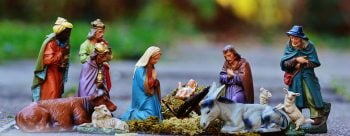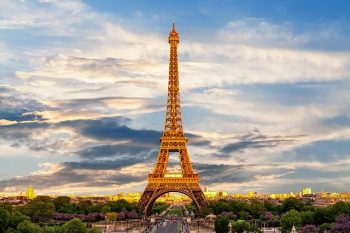Frida Kahlo and Diego Rivera
Frida Kahlo fue una pintora mexicana que es un ícono cultural en todo el mundo (Frida Kahlo was a Mexican painter who is a cultural icon around the world). We’ve had a few posts about her on the blog in the past. You can read about her early life as well as some of her most famous works and quotes. In this post, we’ll take a closer look at her tumultuous relationship with another one of Mexico’s most famous artists.
Meeting Diego Rivera
As I mentioned in the post about her early years, Frida Kahlo joined el Partido Comunista Mexicano (the Mexican Communist Party) and befriended activists like Italian-American photographer Tina Modotti. It was at one of Modotti’s parties that she was introduced to fellow artist Diego Rivera. Several years prior, she met him briefly while he was painting his first mural at her school. Called La Creacion (Creation), it covered a thousand square feet and featured religious motifs.
Frida Kahlo comenzó a pintar después del horrible accidente de autobús (Frida Kahlo started painting after the horrible bus accident). She asked Rivera to judge some of her artworks, and he encouraged her to continue painting. A budding romance emerged between the two artists, even though he was 20 years her senior. The two were married on August 29, 1929, in the Coyoacan neighborhood of Mexico City.
Their marriage was described as “la unión entre un elefante y una paloma” (the union between an elephant and a dove). This was due to their difference in size – Rivera was tall and overweight while Kahlo was short and frail.
For the first few years of their marriage, she traveled with him to different cities where he was painting murals. They first went to Cuernavaca in the state of Morelos so he could paint a mural at el Palacio de de Cortés (the Palace of de Cortés). It was here that she began to develop a deeper sense of Mexican identity.
Developing Her Style
Kahlo comenzó a usar ropa tradicional mexicana, como vestidos largos y coloridos, tocados y joyas exóticas (Kahlo began wearing traditional Mexican clothing, such as long colorful dresses, headdresses, and exotic jewelry). She embraced her mestiza heritage by wearing huipils and rebozos – traditional garments worn by indigenous women.
It wasn’t just her wardrobe that changed after their move, though. Kahlo also drew inspiration from Mexican folk art that started to show in her own works. She continued to paint many self-portraits, including one titled Frieda y Diego Rivera in 1931. Many consider this to be a wedding portrait.
When funding for murals dried up in Mexico, the two moved to the United States – first to San Francisco, then New York, and finally Detroit. During their time in Detroit, Kahlo experienced numerous health problems after she had a miscarriage. The sadness and pain she felt soon came out in her art.
On her work during their time in Detroit, Diego Rivera said:
Frida empezó a trabajar en una serie de obras maestras sin precedentes en la historia del arte, pinturas que exaltaban la cualidad femenina de la verdad, la realidad, la crueldad y la pena. Nunca antes una mujer había puesto semejante atormentada poesía sobre la tela como Frida en esta época de Detroit. (Frida began to work on a series of masterpieces unprecedented in the history of art, paintings that exalted the feminine quality of truth, reality, cruelty and pain. Never before had a woman put such tormented poetry on the canvas as Frida at this time in Detroit.)
One of her most famous paintings from this time is Henry Ford Hospital, which depicts her lying naked and bleeding on a hospital bed after her miscarriage. Click here to learn more about this powerful artwork by Frida Kahlo.
Another of her notable works from the time is Autorretrato en la Frontera Entre Mexico y los Estados Unidos (Self-portrait on the Border Between Mexico and the United States). While Rivera enjoyed their time spent living in the US, it’s clear from this painting that Kahlo did not. In fact, here’s a quote from her on her experiences living in Detroit:
Es aterrador ver a los ricos haciendo fiestas día y noche mientras miles y miles de personas mueren de hambre. (It is terrifying to see the rich having parties day and night while thousands and thousands of people are dying of hunger.)
After Rivera was fired from his mural project at the Rockefeller Center for including an image of Soviet leader Vladimir Lenin, the couple returned to Mexico City. That’s where we’ll pick up the story in the next post, where we’ll look at Frida Kahlo’s later years and her lasting legacy.
Posteado en Spanish Articles (Facebook)




